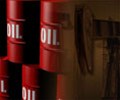In Oil & Companies News 07/11/2016

Oil registered the biggest weekly loss in almost 10 months as hopes faded that Opec will be able to implement a promised deal to cut production and ease global oversupplies. Once prices stop climbing, they (most often) correct. With little clarity about specific production cuts, prices initially rose above $50 per barrel but then started to fall. The devil is in the detail. Opec needs to provide more clarity on how the production- sharing agreement would work to bring a price recovery.
Last week, it was reported that Saudi Arabia threatened to raise output if other members didn’t agree to cuts. This was later denied by the Opec secretary general, Mohammed Barkindo. Opec failed on October 28 to agree on output quotas for member countries, which must happen before a deal can be finalised. Certainly the closer we get to an actual decision or no decision on production cuts, market nervousness will increase.
Opec alone cannot cut output to stabilise the market, as it had been warned by Ali Al Naimi, the former Saudi Arabian oil minister who masterminded the market share (pump-at-will) policy that the group adopted two years ago. He said that the situation has changed as other producers, including Russia, were talking to the group about coordinated cuts. The market will be looking at what Opec ultimately delivers versus what is required.
Within Opec, Iraq increased output by 50,000 barrels per day to a record 4.59 million barrels per day and asked to be excluded from the mandated cuts because of its war with ISIL. Libya, Nigeria and Iran, which are exempt from the production cuts deal, pumped an additional 400,000 barrels per day in October.
Saudi Arabia is motivated by its long-standing position to minimise volatility. It wants to prevent both a price collapse and a price spike. It was happy for its policy to gain market share in 2014 take shape, but now it’s more about gradual price recovery. The kingdom does want prices to recover but neither quickly enough nor high enough to encourage non-conventional (shale) suppliers to re-enter the market.
At the core of the new Saudi oil strategy is a realisation that their Opec friends and non-Opec contenders have to be conciliated more than before. The person in charge of this is Khalid Al Falih, the minister of energy. The economy has slowed since 2014, when his processor, Mr Al Naimi, opted for more of a unilateral market forces approach. While the oil price front has to be managed, Mr Al Falih is overseeing the largest part-privatisation through an IPO in history, that of the strategic oil company Saudi Aramco.
There is a widely-held assumption that US shale is economically viable around $60 per barrel. This of course remains to be seen and tested. What we do know is that before the 2014 oil price collapse, US shale output was rising by about 1 million daily barrels each year. It remains to be seen if shale output recovers in tandem with prices. That is the biggest danger to Opec.
Of concern is how much supply is out there and how much can be produced with oil prices below $50 per barrel. Brent finished last week down 8.3 per cent at $45.58, while West Texas Intermediate lost 9.5 per cent to close at $44.07.
International oil companies will probably cut investment spending by about $370 billion this year and next, according to Wood MacKenzie, just as the UAE warned that the massive number of projects being delayed because of the drop in crude prices could lay the groundwork for a future shortage. A shortage is implicitly referring to a future price spike which will be an anathema to Saudi Arabia’s balanced approach.
The global oil industry has postponed a number of projects, raising the risk of a slump in output and a potential shortfall in supply, Suhail Al Mazrouei, the Minister of Energy of the UAE, said recently. The International Energy Agency, for its part, estimates spending in exploration and production fell 25 per cent in 2015 and will decline by the same amount this year, cutting more than $300bn in investment. The IEA does not expect an investment recovery to take place in 2017. There is some logic to the above expectation: oil will have to stay for a few quarters at just above $50 per barrel for many oil majors and their respective boards to decide making an investment decision to expand output. As long as oil keeps on dipping below $50, the longer will firms keep on postponing investments.
However there are those who are forecasting that oil output will match prices and that as oil recovers to $60 in the second half of 2017 from now and to $65 to $70 three quarters afterwards, that there will be enough supply incentives for firms to invest in parallel.
Oil prices will recover, as mentioned in previous articles, but it won’t be a straight upward line as volatility prevails.
We are in a new supply-demand paradigm which requires testing. Saudi Arabia is involved in a delicate balancing act. The hedge fund community still has a strong bullish bias towards oil on the expectation the supply-demand balance will tighten and lift prices during 2017.
Crude prices are likely to remain under pressure in the short term until more of the record net long positions have been liquidated by hedge funds, or until Opec can provide convincing details of how the output agreement will work. Volatility ensues.
Source: The National

